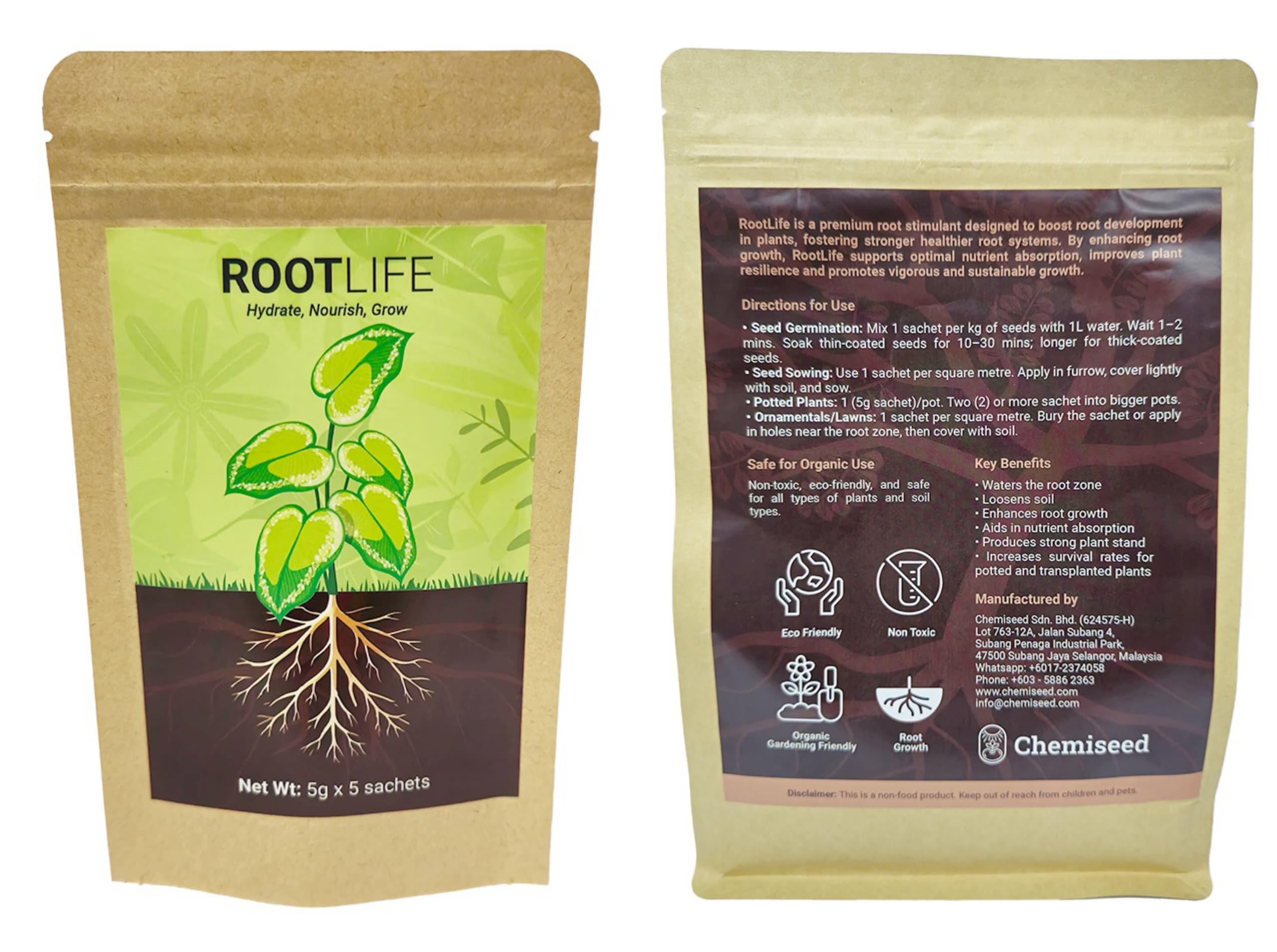Choosing the right fertilizer can dramatically influence your farm's productivity, soil health, and environmental footprint. Here's what scientific research reveals about sustainable agriculture solutions.

Farmers frequently wonder whether organic or chemical fertilizers offer the best results. Here's what scientific research reveals about these two approaches, along with insights into why products like Chemiseed's RootLife and SoilBoost EA represent sustainable solutions for tropical agriculture.
Understanding Organic Fertilizers

Organic fertilizers originate from natural sources such as compost, manure, humic substances, and plant residues. They enrich the soil gradually, providing slow-release nutrients and improving soil structure and biology.
Research-Backed Benefits of Organic Fertilizers
Enhancing Soil Health
Organic fertilizers significantly boost soil structure, microbial life, and nutrient retention capacity. Research published in the Journal of Soil Science and Plant Nutrition found that organic amendments such as humic acid consistently improved soil biology, increasing beneficial microbial populations that aid nutrient cycling (Ahmad et al., 2020).
Long-Term Nutrient Supply
Studies indicate organic fertilizers provide nutrients gradually, supporting long-term fertility. A long-term study by the Food and Agriculture Organization (FAO) demonstrated that fields receiving organic amendments showed sustained nutrient availability and crop productivity over multiple seasons (FAO, 2021).
Reduced Environmental Impact
Organic fertilizers minimize nutrient runoff and environmental pollution. Researchers observed significantly lower nutrient leaching in soils amended with organic materials, preserving groundwater quality and ecosystems (Lehmann & Kleber, 2015).
Understanding Chemical Fertilizers

Chemical (synthetic) fertilizers are manufactured industrially and typically contain concentrated nutrients such as nitrogen (N), phosphorus (P), and potassium (K). They deliver nutrients rapidly and in precise quantities.
Chemical fertilizers are broadly categorized into nitrogenous, phosphatic, and potassic fertilizers, based on the primary nutrient they provide.
Research-Backed Benefits of Chemical Fertilizers
Rapid Plant Response
Chemical fertilizers quickly address nutrient deficiencies. Plants absorb synthetic nutrients immediately, resulting in fast growth responses. A study published in Soil Use and Management indicated that immediate yield increases often occur following synthetic fertilizer application (Smith & Siciliano, 2015).
Precise Nutrient Management
Chemical fertilizers allow targeted nutrient applications based on specific crop requirements. Farmers can fine-tune nutrient levels for precise yield goals, reducing short-term nutrient deficiencies.
Research-Backed Drawbacks of Chemical Fertilizers
Soil Degradation

Long-term chemical fertilizer use negatively impacts soil structure, reducing microbial biodiversity and organic matter content. A comparative study in the European Journal of Soil Biology found continuous chemical fertilizer applications significantly reduced beneficial microbes essential for soil fertility (Geisseler & Scow, 2014).
Soil degradation is the loss of land's physical, chemical, biological, and ecological qualities. This process undermines the soil's ability to support plant growth and maintain environmental functions, leading to reduced agricultural productivity and ecosystem health.
Environmental Risks

Chemical fertilizers increase nutrient runoff, contributing to water pollution and eutrophication. The FAO highlights excessive synthetic fertilizer usage as a key contributor to global environmental issues, including polluted water bodies and greenhouse gas emissions (FAO, 2021).
Eutrophication is characterized by excessive plant and algal growth in water bodies, leading to oxygen depletion and harm to aquatic ecosystems. This process threatens biodiversity and water quality worldwide.
Why Choose Eco-Safe Products Like RootLife and SoilBoost EA?
Chemiseed's innovative solutions, RootLife and SoilBoost EA, combine the best of organic amendments and scientific precision, designed specifically for eco-safe, sustainable agriculture:
RootLife: Mineral-Rich Organic Biostimulant

- Enhances nutrient uptake efficiency, significantly reducing chemical fertilizer requirements
- Boosts beneficial microbial activity, improving soil biology and plant health
- Supports long-term soil fertility and environmental sustainability
- Improves plant resilience against stress conditions
Scientific Evidence
Research shows mineral-rich organic amendments enhance crop productivity and resilience by promoting microbial populations critical for nutrient cycling and root health (Ahmad et al., 2020).
SoilBoost EA: Premium Humic Acid from Leonardite Ore

- Unlocks nutrients naturally present in soil through chelation processes
- Improves soil structure, moisture retention, and buffering capacity against acidity
- Reduces reliance on synthetic fertilizers, minimizing nutrient runoff and environmental pollution
- Enhances cation exchange capacity for better nutrient availability
Scientific Evidence
A study by Ahmad et al. (2020) demonstrated that humic acid applications significantly improved root growth, nutrient absorption, and overall crop yield, particularly in nutrient-depleted tropical soils.
Conclusion: The Sustainable Agriculture Advantage
While chemical fertilizers offer short-term yield improvements, the long-term consequences to soil health, productivity, and environmental quality are substantial. Organic fertilizers and amendments, such as Chemiseed's RootLife and SoilBoost EA, provide a scientifically proven, eco-friendly alternative that delivers consistent, sustainable benefits to your farm and the environment.
Choosing products like RootLife and SoilBoost EA means investing in healthy soils, vibrant ecosystems, and sustainable agricultural productivity for generations to come.
Explore Our Sustainable Agriculture Solutions
Scientific References
- Ahmad, F., et al. (2020). Effects of Humic Substances on Root Development and Soil Fertility in Tropical Agriculture. Journal of Soil Science and Plant Nutrition, 20(2), 305–312.
- FAO (2021). The State of Soil Fertility in Agricultural Ecosystems. Food and Agriculture Organization of the United Nations.
- Geisseler, D., & Scow, K. M. (2014). Long-term effects of mineral fertilizers on soil microorganisms—A review. European Journal of Soil Biology, 60, 41–48.
- Lehmann, J., & Kleber, M. (2015). The contentious nature of soil organic matter. Nature, 528(7580), 60–68.
- Smith, L. E. D., & Siciliano, G. (2015). A comprehensive review of constraints to improved management of fertilizers in tropical agriculture. Soil Use and Management, 31, 289–301.
By choosing Chemiseed's sustainable solutions, you're actively participating in eco-friendly agriculture; building better soil, enhancing crop health, and protecting the environment.
